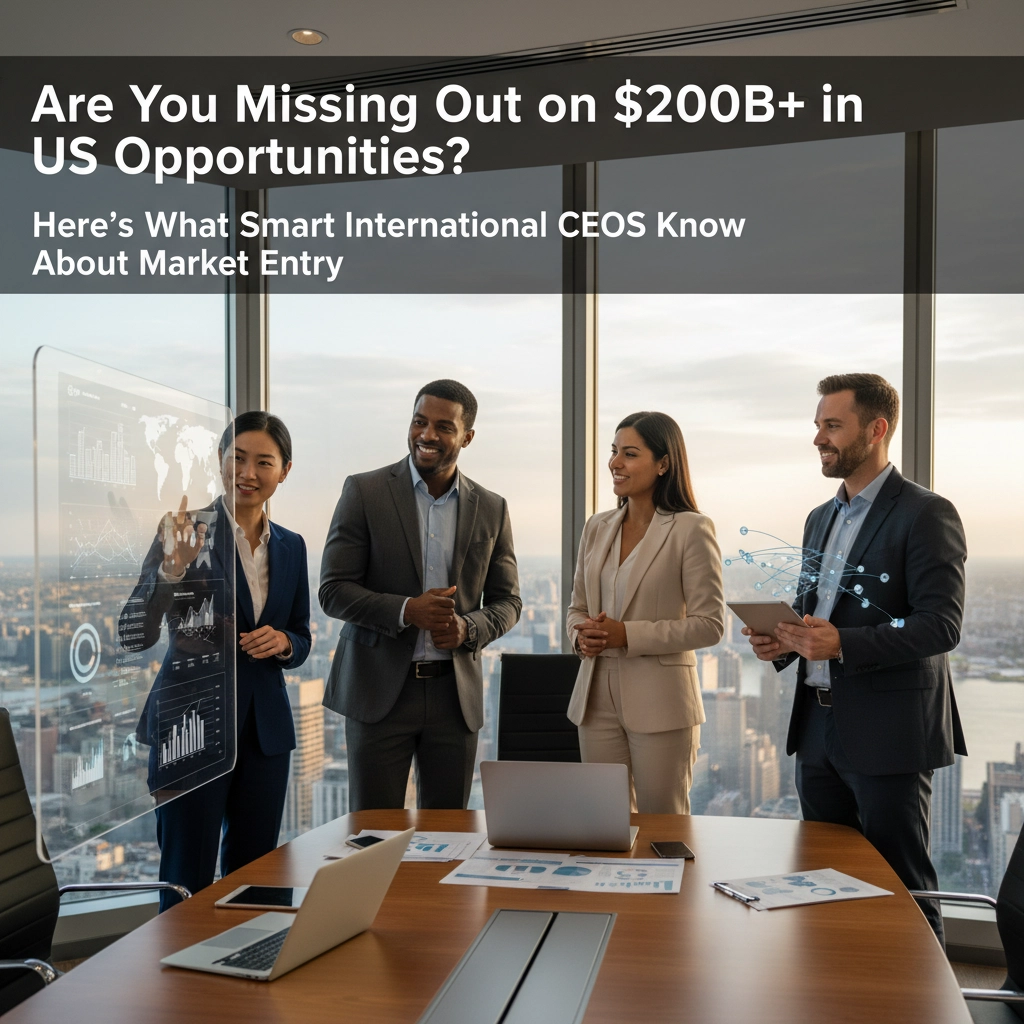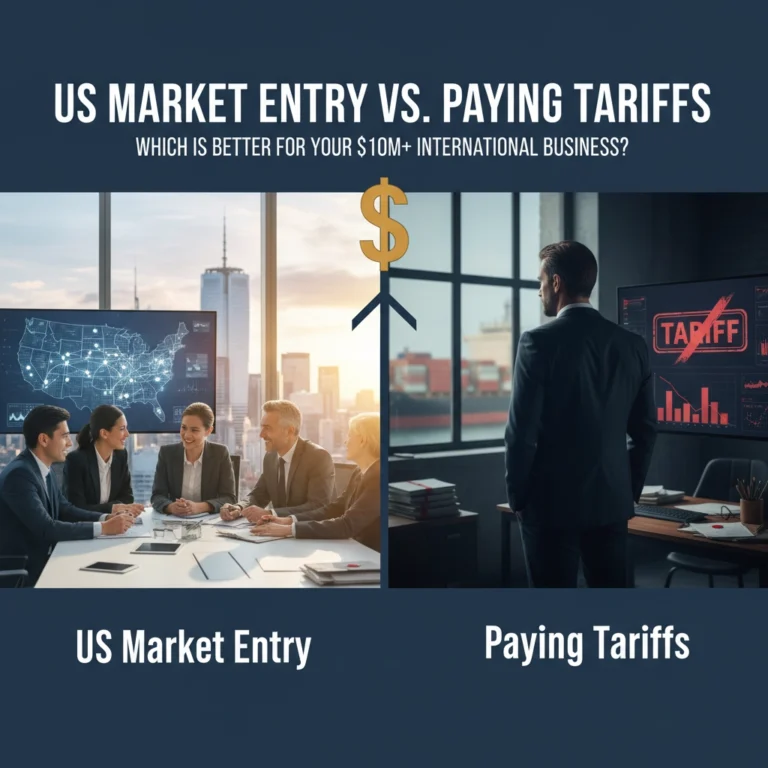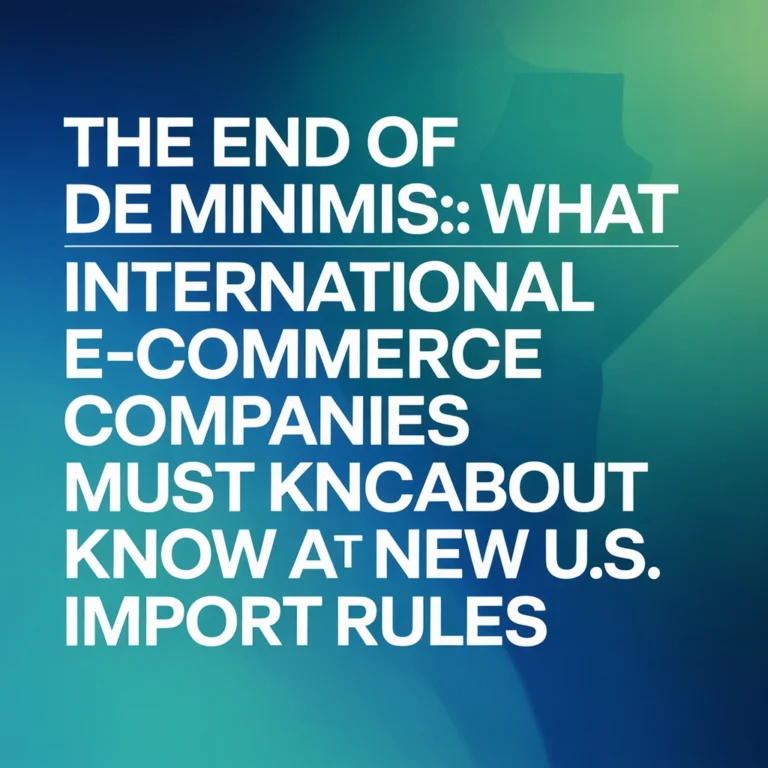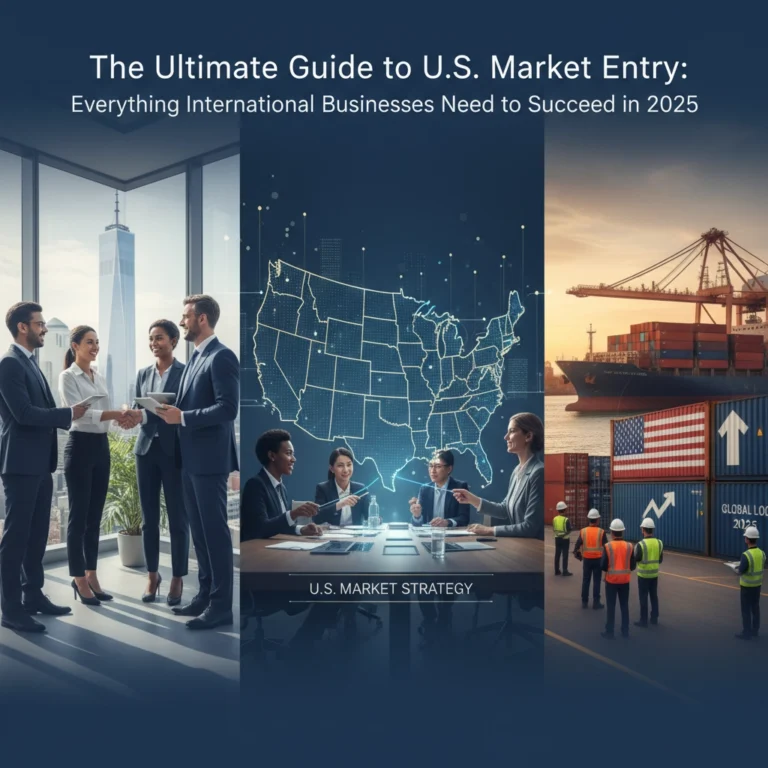Are You Missing Out on $200B+ in US Opportunities? Here's What Smart International CEOs Know About Market Entry

The $200 billion figure isn't marketing fluff: it's real money. SelectUSA has facilitated over $200 billion in verified foreign investment, supporting more than 200,000 American jobs. For international CEOs, this massive capital flow signals something bigger: the U.S. market is rewarding smart foreign investment like never before.
But here's the thing most executives miss: 2025 is the strategic window. The companies entering now are positioning themselves for decades of growth, while those waiting are watching opportunities slip away.
The Numbers Don't Lie: Why 2025 Is Different
Over 4,800 international companies established U.S. operations in 2024, creating 285,000 American jobs. Mid-sized European firms alone increased their market entry by 23% compared to 2023.
What's driving this surge? SBA manufacturing loans jumped 74% in just the first quarter. State incentive packages hit historic highs. The federal government is actively rebuilding U.S. manufacturing and strengthening supply chains.

Smart CEOs recognize these aren't temporary trends: they're structural shifts creating a buyer's market for international companies with solid business cases.
What Successful CEOs Know About Timing
The SelectUSA Investment Summit drew 5,500 attendees in 2025: a 40% increase showing unprecedented government commitment to foreign investment. But successful international CEOs aren't just following crowds. They're reading deeper signals.
American SMEs are growth-hungry but resource-conscious. 68% are meeting or beating performance expectations despite economic uncertainty. 85% expect steady or improved performance through year-end. This creates what industry analysts call an "opportunity gap."
Here's what that means: American companies want innovation, but they need partners who can deliver it efficiently. 53% now use AI tools, but they're looking for proven solutions, not experiments.
The State-by-State Reality Check
Here's where many international companies stumble: they treat the U.S. as one market. It's not. It's 50 different states with distinct rules, tax codes, and business cultures.
Successful CEOs understand this fragmentation creates both massive opportunity and significant risk. The winners pick their battles strategically.
California offers access to tech innovation and venture capital, but comes with higher costs and complex regulations. Texas provides business-friendly policies and growing markets, with lower operational costs. Florida delivers no state income tax and growing international trade connections.

The key insight? The U.S. market rewards companies who get it right the first time. Mistakes are expensive and often permanent.
The AI Multiplication Factor
Beyond traditional opportunities, artificial intelligence creates an additional $15.8 trillion market opportunity. For international companies with AI capabilities or those serving AI-enabled businesses, this represents massive acceleration.
Smart international CEOs are combining traditional market entry with AI positioning. They're not just entering the U.S. market: they're entering the future U.S. market.
Direct Subsidiary Formation: Why It Still Wins
Despite all the talk about partnerships and joint ventures, successful international CEOs still prefer direct subsidiary formation for one simple reason: control.
Enhanced SBA processes mean incorporation and operational setup now happens 45% faster than pre-2025 timelines. The SBA's 7(a) loan program offers up to $5 million with government guarantees, making this approach accessible for mid-market international companies.
The strategic advantage? You own your U.S. presence completely. You control pricing, partnerships, and customer relationships. When market conditions change: and they will: you can pivot quickly.

Three Critical Mistakes That Kill Market Entry
Mistake #1: Underestimating compliance complexity. Every state has different requirements. What works in Delaware might fail in California. Successful CEOs invest in proper legal structure from day one.
Mistake #2: Treating the U.S. like Europe. American business culture moves faster, expects more direct communication, and values results over relationships initially. Adapt your approach.
Mistake #3: Insufficient capitalization. U.S. market entry costs more than most international companies expect. Plan for 18-24 months of runway, not 6-12 months.
The Government Incentive Advantage
State governments are competing aggressively for foreign investment. Tailored incentive packages include tax credits, grants, and expedited permitting. But here's what most companies miss: you have to ask.
Successful international CEOs negotiate incentive packages before finalizing location decisions. They leverage states against each other (professionally) to maximize benefits.
The results can be dramatic. Some companies receive packages worth millions in tax credits and direct grants, fundamentally changing their market entry economics.
Why Speed Matters More Than Perfection
The regulatory environment has transformed. Processes that previously took months now happen in weeks thanks to SBA's revolutionized support system. But this advantage only helps companies ready to move quickly.
Successful international CEOs prepare everything in parallel: legal structure, banking relationships, initial hiring, and market research. When they're ready to execute, they move fast.

The competitive advantage isn't perfection: it's speed with competence.
Making the Strategic Call
The $200+ billion in facilitated investment represents just the documented opportunities. The real number is much larger when you include private transactions and emerging sectors.
Smart international CEOs see 2025 as a strategic inflection point. Government policy supports foreign investment. Economic conditions favor innovation providers. Competition isn't saturated yet.
But windows don't stay open forever. The companies entering now are positioning themselves for decades of growth. Those waiting are watching opportunities slip away to competitors who moved faster.
Your Next Move
The question isn't whether opportunities exist in the U.S. market: they clearly do. The question is whether you're positioned to capture them.
Successful international CEOs approach U.S. market entry strategically: clear objectives, proper preparation, and expert guidance when needed. They understand that getting it right the first time is cheaper than fixing mistakes later.
If you're serious about U.S. market entry, start with strategy, not tactics. Understand your true market position, identify the right entry approach for your specific situation, and move decisively when conditions align.
The $200+ billion opportunity is real. The question is: will your company be part of the next wave, or will you watch from the sidelines?






